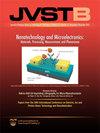Optical realization of the pascal—Characterization of two gas modulated refractometers
IF 1.4
4区 工程技术
引用次数: 9
Abstract
By measuring the refractivity and the temperature of a gas, its pressure can be calculated from fundamental principles. The most sensitive instruments are currently based on Fabry–Perot cavities where a laser is used to probe the frequency of a cavity mode. However, for best accuracy, the realization of such systems requires exceptional mechanical stability. Gas modulation refractometry (GAMOR) has previously demonstrated an impressive ability to mitigate the influence of fluctuations and drifts whereby it can provide high-precision (sub-ppm, i.e., sub-parts-per-million or sub- 10 − 6) assessment of gas refractivity and pressure. In this work, two independent GAMOR-based refractometers are individually characterized, compared to each other, and finally compared to a calibrated dead weight piston gauge with respect to their abilities to assess pressure in the 4–25 kPa range. The first system, referred to as the stationary optical pascal (SOP), uses a miniature fixed point gallium cell to measure the temperature. The second system, denoted the transportable optical pascal (TOP), relies on calibrated Pt-100 sensors. The expanded uncertainty for assessment of pressure ( k = 2) was estimated to, for the SOP and TOP, [ ( 10 mPa ) 2 + ( 10 × 10 − 6 P ) 2 ] 1 / 2 and [ ( 16 mPa ) 2 + ( 28 × 10 − 6 P ) 2 ] 1 / 2, respectively. While the uncertainty of the SOP is mainly limited by the uncertainty in the molar polarizability of nitrogen (8 ppm), the uncertainty of the TOP is dominated by the temperature assessment (26 ppm). To verify the long-term stability, the systems were compared to each other over a period of 5 months. It was found that all measurements fell within the estimated expanded uncertainty ( k = 2) for comparative measurements (27 ppm). This verified that the estimated error budget for the uncorrelated errors holds over this extensive period of time.两个气体调制折光计帕斯卡表征的光学实现
通过测量气体的折射率和温度,可以根据基本原理计算出气体的压力。目前最灵敏的仪器是基于法布里-珀罗腔,其中激光用于探测腔模式的频率。然而,为了获得最佳精度,实现这种系统需要特殊的机械稳定性。气体调制折射仪(GAMOR)之前已经证明了其在减轻波动和漂移影响方面令人印象深刻的能力,因此它可以提供高精度(亚ppm,即百万分之一或低于10−6)的气体折射率和压力评估。在这项工作中,两个独立的基于gamor的折光计分别进行了表征,相互比较,最后与校准的自重活塞计进行了比较,以评估4-25 kPa范围内的压力。第一个系统,被称为固定光学帕斯卡(SOP),使用一个微型定点镓电池来测量温度。第二个系统,被称为可移动光学帕斯卡(TOP),依赖于校准的Pt-100传感器。对于SOP和TOP,压力(k = 2)评估的扩展不确定度分别为[(10 mPa) 2 + (10 × 10−6 P) 2] 1 / 2和[(16 mPa) 2 + (28 × 10−6 P) 2] 1 / 2。SOP的不确定度主要受氮的摩尔极化率(8 ppm)的不确定度限制,而TOP的不确定度主要受温度评估(26 ppm)的不确定度限制。为了验证长期稳定性,在5个月的时间内对系统进行了相互比较。结果发现,所有测量值都落在比较测量值(27 ppm)的估计扩展不确定度(k = 2)之内。这证实了不相关误差的估计误差预算在这段很长的时间内保持不变。
本文章由计算机程序翻译,如有差异,请以英文原文为准。
求助全文
约1分钟内获得全文
求助全文
来源期刊

Journal of Vacuum Science & Technology B
工程技术-工程:电子与电气
自引率
14.30%
发文量
0
审稿时长
2.5 months
期刊介绍:
Journal of Vacuum Science & Technology B emphasizes processing, measurement and phenomena associated with micrometer and nanometer structures and devices. Processing may include vacuum processing, plasma processing and microlithography among others, while measurement refers to a wide range of materials and device characterization methods for understanding the physics and chemistry of submicron and nanometer structures and devices.
 求助内容:
求助内容: 应助结果提醒方式:
应助结果提醒方式:


